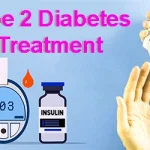Breast cancer Symptoms
Breast cancer Symptoms and causes: Breast cancer is a type of cancer that originates from the proliferation of cells in breast tissue. Following skin cancer, breast cancer is the second most frequently diagnosed cancer in women in the United States. However, breast cancer is not exclusive to women; everyone possesses some breast tissue, making it possible for anyone to develop breast cancer.
Survival rates for breast cancer have been rising. Additionally, the number of fatalities attributed to breast cancer is consistently decreasing. A significant part of this progress can be attributed to the extensive advocacy for breast cancer awareness and the funding dedicated to research.
Improvements in breast cancer screening enable medical professionals to identify breast cancer at an earlier stage. Detecting the cancer sooner greatly increases the chances of successful treatment.
Even in cases where breast cancer cannot be completely cured, numerous therapies are available to prolong life. Recent findings in breast cancer research are assisting healthcare practitioners in selecting the most effective treatment strategies.
What is Breast cancer
Breast cancer is a type of cancer that forms in the cells of the breast. It occurs when cells in the breast begin to grow uncontrollably, often forming a tumor that can be felt as a lump or seen on an imaging test like a mammogram. Although breast cancer primarily affects women, men can also develop it, though it’s less common.
There are several types of breast cancer, with the main ones being:
Ductal Carcinoma in Situ (DCIS): A non-invasive cancer where abnormal cells are found in the lining of a breast duct but have not spread outside the duct.
Invasive Ductal Carcinoma (IDC): The most common type, where cancer cells begin in the milk ducts and invade surrounding tissue. This type has the potential to spread to other parts of the body.
Invasive Lobular Carcinoma (ILC): Starts in the milk-producing lobules and can spread to nearby tissues.
Breast cancer can also be classified by hormone receptor status:
- Hormone receptor-positive: Cancers that grow in response to estrogen or progesterone.
- HER2-positive: Cancers with high levels of the HER2 protein, which promotes cancer cell growth.
- Triple-negative breast cancer: Lacks estrogen, progesterone, and HER2 receptors, making it more challenging to treat with hormone therapies.
Risk Factors
Risk factors for breast cancer include genetics (mutations in BRCA1 and BRCA2 genes), age, family history, lifestyle factors (e.g., alcohol consumption, obesity), and certain hormonal therapies.
Symptoms
Common signs include a lump in the breast or underarm, changes in breast size or shape, dimpling of the skin, nipple discharge, or pain in the breast or nipple.
Breast cancer develops when breast cells grow abnormally and out of control. While the exact cause of breast cancer is often unclear, several risk factors can increase the likelihood of developing the disease.
Symptoms of Breast Cancer
The symptoms of breast cancer can vary depending on the type and stage. Common signs to watch for include:
- Lump or thickening in the breast or underarm: This is often the first noticeable symptom, usually feeling firm, hard, and painless.
- Change in breast size, shape, or appearance: Swelling, distortion, or a noticeable difference between the breasts.
- Skin changes: Dimpling, puckering, redness, or scaling on the breast, which can resemble the texture of an orange peel.
- Nipple changes: Inversion (turning inward) or discharge, particularly if it’s clear, bloody, or yellow.
- Pain or tenderness: Persistent discomfort or pain in the breast or nipple area.
- Swollen lymph nodes: Swelling or lump in the lymph nodes under the arm or near the collarbone can also be an early sign.
It’s important to note that these symptoms do not always indicate breast cancer and can be caused by other conditions, such as cysts or infections.
Causes and Risk Factors of Breast Cancer
The precise reasons for the majority of breast cancers remain unidentified. Studies have identified various factors that elevate the risk of developing breast cancer, which include hormones, lifestyle choices, and environmental influences.
However, it remains uncertain why some individuals without any risk factors develop cancer while others with such factors do not. It is probable that breast cancer arises from a complicated interplay between an individual’s genetic composition and external factors.
The exact cause of breast cancer is not always known, but several risk factors can increase the likelihood of developing it:
1. Genetic Mutations
Mutations in genes such as BRCA1 and BRCA2 are strongly linked to an increased risk. These mutations can be inherited and account for a significant portion of hereditary breast cancer cases.
2. Family History
A family history of breast or ovarian cancer (particularly in close relatives) increases risk, especially if the relative had cancer at a young age.
3. Hormonal Factors
Hormone replacement therapy (HRT) after menopause, especially combined estrogen-progestin therapy, is associated with an increased risk.
Early menstruation (before age 12) or late menopause (after age 55) means prolonged exposure to estrogen, which slightly increases risk.
Late pregnancy or no pregnancies: Women who have their first child after age 30 or never have a full-term pregnancy have a higher risk.
4. Age
The risk of breast cancer increases with age, with most cases diagnosed in women over 50.
5. Lifestyle Factors
Alcohol consumption: Drinking alcohol regularly has been linked to a higher risk of breast cancer.
Obesity and lack of exercise: Being overweight, particularly after menopause, is linked to a higher risk. Physical inactivity also increases the likelihood.
Exposure to radiation: Previous radiation therapy to the chest area (such as for Hodgkin’s lymphoma) may increase the risk.
6. Breast Density
Dense breast tissue (detected through a mammogram) can increase the risk, making it harder to spot tumors on imaging.
7. Other Factors
Certain benign breast conditions: Conditions like atypical hyperplasia (overgrowth of abnormal cells) increase the risk of breast cancer.
Environmental exposure: Some studies suggest a possible link between breast cancer and exposure to certain chemicals, but research is ongoing.
Prevention and Early Detection
While some risk factors (like family history and genetics) are beyond control, lifestyle changes and regular screenings (like mammograms) can reduce risk and increase the chances of early detection.
The alterations in DNA that contribute to breast cancer typically occur in the cells lining the milk ducts. These ducts are structures meant for transporting milk to the nipple. Breast cancer originating in these ducts is referred to as invasive ductal carcinoma.
Additionally, breast cancer can begin in the cells found in the milk-producing glands. These glands, known as lobules, are responsible for producing breast milk.
Conclusion
Breast cancer Symptoms and causes: Cancer cells can develop into a cluster known as a tumor. This tumor has the potential to expand, invading and harming normal body tissue. Eventually, cancer cells may detach and disseminate to different areas of the body.
When cancer advances in this way, it is referred to as metastatic cancer. We learned a lot about cancer. Here are other posts, hope you can get more information from here. So don’t forget to visit regularly to get new articles.





